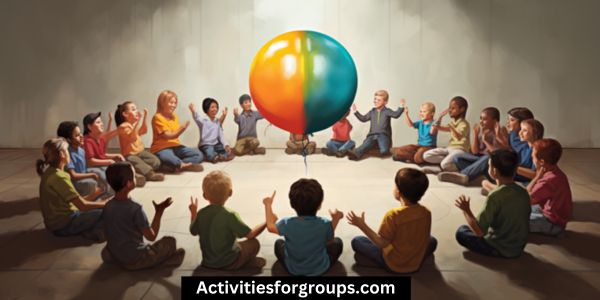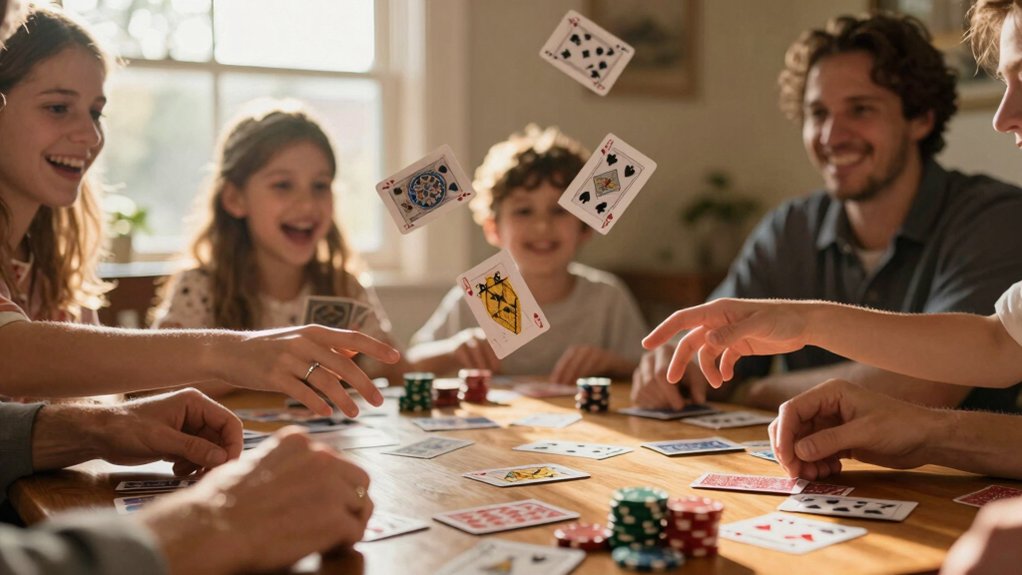Are you looking for a fun activity to keep the kids entertained?
Organizing indoor group games for kids is a great way to get them up and active.

Here you’ll learn how to choose games, prepare a room, set rules, select teams, and encourage participation to ensure a successful event.
So, let’s get started!
Choosing the Games
Your kid’s age and interests should be taken into account when choosing the games. Icebreakers, team building, and creative games are all fun and engaging options when planning indoor group games for kids.
When selecting the games, consider the size and age of the group, as well as the skill levels of the players. For younger kids, simple games like ‘Duck, Duck, Goose’ or ‘Simon Says’ are perfect. For older kids, team building activities such as ‘Trust Falls’ or ‘Living Statues’ can be incorporated as icebreakers. For the more creative kids, you could try a game like ‘Pictionary’ or ‘Two Truths and a Lie’.
To find age-appropriate games, check out online resources or ask your kid’s friends and family for game suggestions. When you’ve found the right games, provide all the necessary materials and explain the rules in a clear and concise manner. Finally, make sure to remind the kids that the most important part of the game is to have fun!
Preparing the Room
Once you’ve chosen the games, it’s time to start preparing the room for your kid’s group games. Here are some tips to consider when setting up the room:
- Make sure there’s enough space for the kids to move freely. This will help promote team building and encourage communication skills as they navigate their way around the room.
- Create an inviting atmosphere. Add decorations and play music to make kids feel comfortable in the space.
- Plan for different levels of activity. Consider having chairs, mats, and other props that can be used during the games.
Organizing a room for group games may seem daunting, but it’s important to think ahead and consider all of the possibilities. With a bit of preparation, the kids will have a fun and safe time playing their favorite games.
Setting Rules

Frequently remind kids of the rules before beginning the game to ensure everyone is aware of the expectations. Setting rules for an indoor group game for kids is an important part of the activity. Rules help create an environment of team spirit and provide structure for the game.
Before you start, set some ground rules to govern how the game will be played. These rules should be simple and easy to understand. For example, you could include a rule that states that all players must be respectful to one another.
It’s also important to include some rules that will reward achievements. These rules can be used to encourage the kids to do their best and make the game more fun. You could set a rule that awards a prize to the player who’s the first to complete a task. This will motivate the kids to work hard and will encourage them to strive for excellence.
Be sure to explain the rules to the kids before the game starts. They should understand what’s expected of them and what the consequences are for not following the rules. This will help ensure that the game runs smoothly and that everyone is having a good time. Additionally, remind the kids of the rules periodically during the game so that they stay on track.
Selecting Teams
Once the rules have been set, it’s time to divide the kids into teams. This is a great way to develop team dynamics and communication skills. Start by grouping the kids according to their size and age. Here are a few tips to help in the process:
- Assign team captains and have them choose their teammates.
- Have the children count off in numerical order.
- Create teams of equal size according to the game’s requirements.
If there are an unequal number of children, give the extra child the option to choose the team they prefer. It’s also important to ensure the teams are fair and balanced. Have the kids sit in a circle and take turns exchanging members. This will help even out the teams.
Finally, make sure to rotate the teams regularly to prevent the same groups playing together all the time. Give each team a unique name and have them create a team cheer. This will help boost morale and create a sense of unity.
With these steps, you’ll have the kids divided into teams and ready to play in no time. Have fun!
Encouraging Participation

Once teams have been formed, it’s important to ensure all players are participating during group games. To do this, you should set up talking points that each player can relate to. Even if the age range of the players spans a few years, finding topics that everyone can discuss will help make everyone feel included. Additionally, be sure to use positive reinforcement to encourage all players to participate.
It’s also important to choose age-appropriate rewards for those who do participate. A reward system can help motivate players to stay engaged and can help create a sense of competition. When setting up the reward system, make sure it’s something that motivates the players and is age appropriate. For example, younger players may enjoy a small prize or reward, such as a sticker or a toy, while older players may be more motivated by a verbal acknowledgment of their success.
Lastly, be sure to keep the game fun and lighthearted. Encouraging participation doesn’t mean forcing any one person to play. If anyone isn’t enjoying the game, it’s best to move on to something else.
Frequently Asked Questions [FAQs]
How Do I Keep the Kids Engaged and Entertained for a Long Period of Time?
Make sure you keep the rules clear and consistent, providing plenty of outdoor playtime for kids. Reinforce any rules that need to be followed and you’ll have them happily entertained for hours.
What Age Group Is Best for These Types of Games?
Indoor activities can be tailored to different age groups. Game variety is important to keep kids engaged and entertained. Consider age appropriateness when organizing activities to ensure everyone is having fun.
What Type of Safety Guidelines Should I Put in Place?
When organizing group games, establish clear rules, age appropriateness, and safety protocols to ensure everybody’s safety.
Is There a Way to Make the Games More Competitive?
You can make the games more competitive by creating teams and awarding prizes. This will motivate players to go the extra mile and perform better.
How Can I Adjust the Games for Different Skill Levels?
Plan activities with varying difficulty levels, assign roles to suit skill levels, and set achievable goals for all kids.
Conclusion
Organizing indoor group games for kids can be a fun and rewarding experience.
Make sure to choose the right games, prepare the room, set the rules, select teams, and encourage participation.
With a little bit of planning and a whole lot of enthusiasm, you can create a memorable and exciting experience that your kids will love!




Leave a Reply